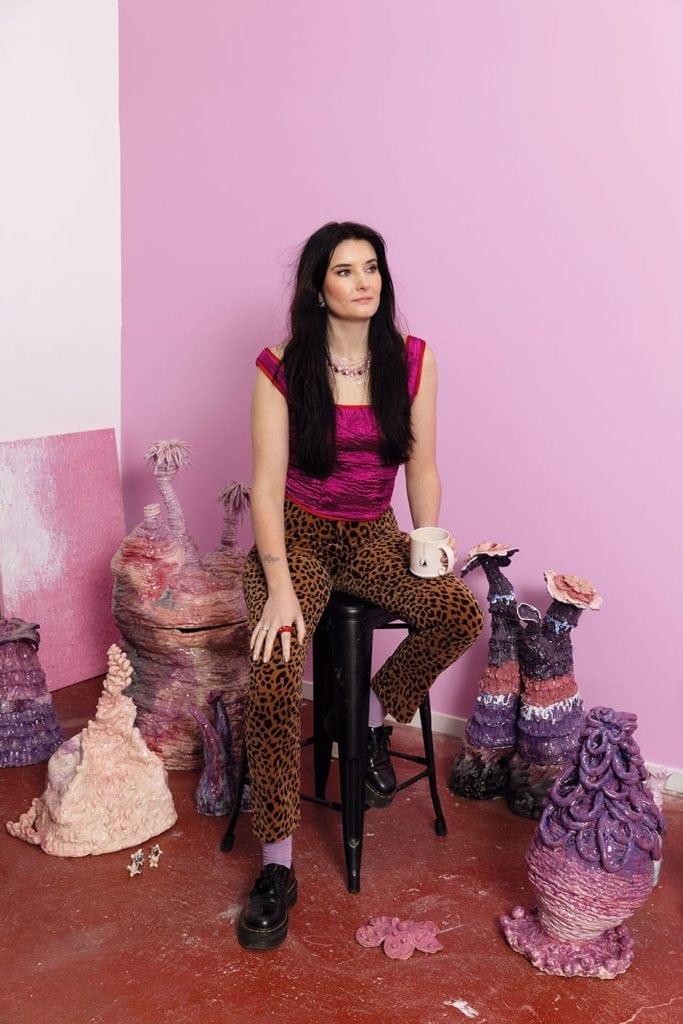25Originally from the Manawatū, object-based installation artist Debbie Harris started out at art school with the intention of becoming a teacher. She really didn’t plan to be an artist, so it was completely by chance that she became enamoured with making — and having previously gravitated towards painting, it was even more accidental that she fell into ceramics. Now she’s living in Tāmaki Makaurau/Auckland with her Master of Visual Arts from AUT done and dusted, and her hands covered in clay.
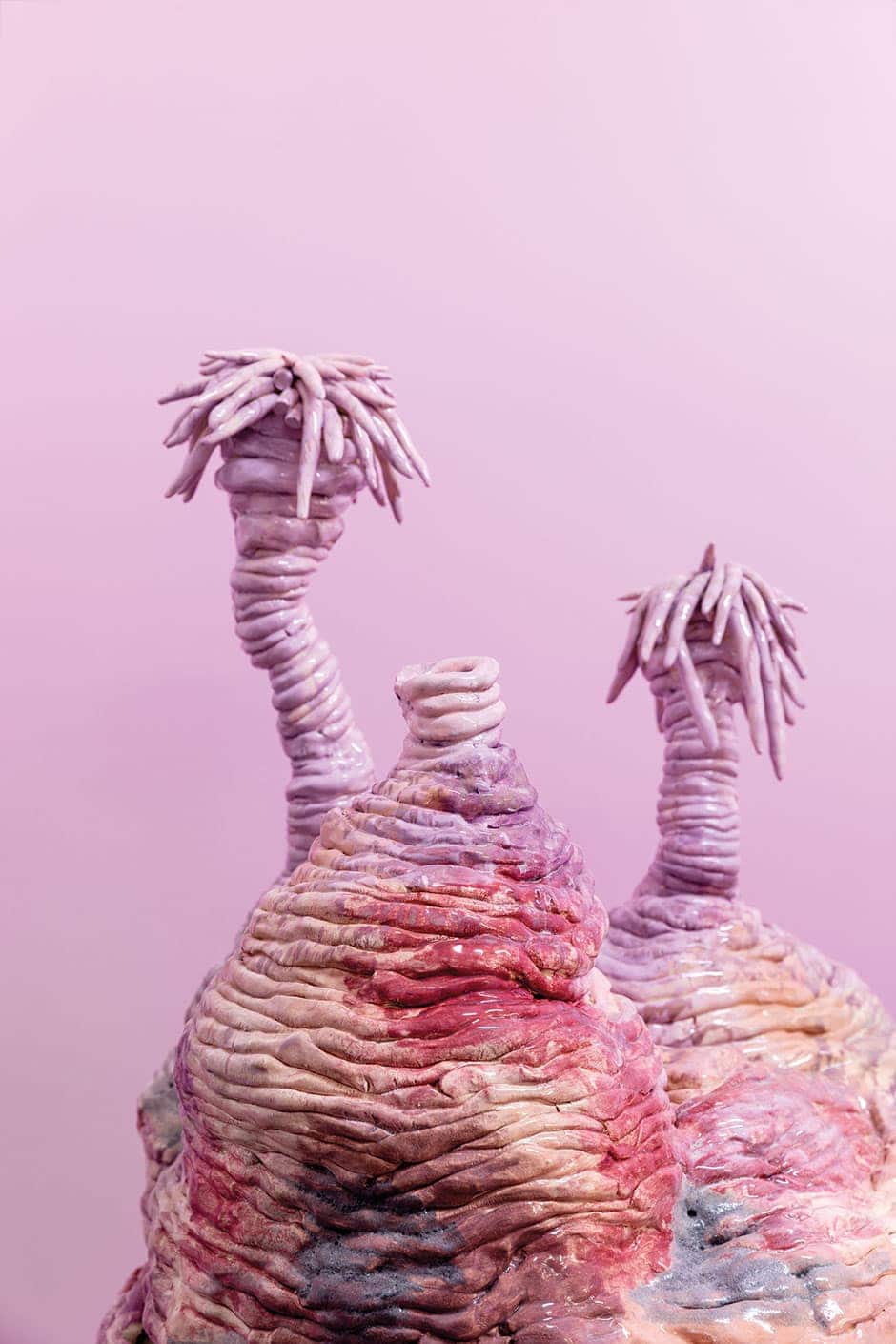
So, Debbie, what do you enjoy most about working with clay? Everything. Every time I finish a work, there’s another form or texture that I want to try next. Sometimes it’s overwhelming trying to figure out how to make everything I want to in the studio time I have.
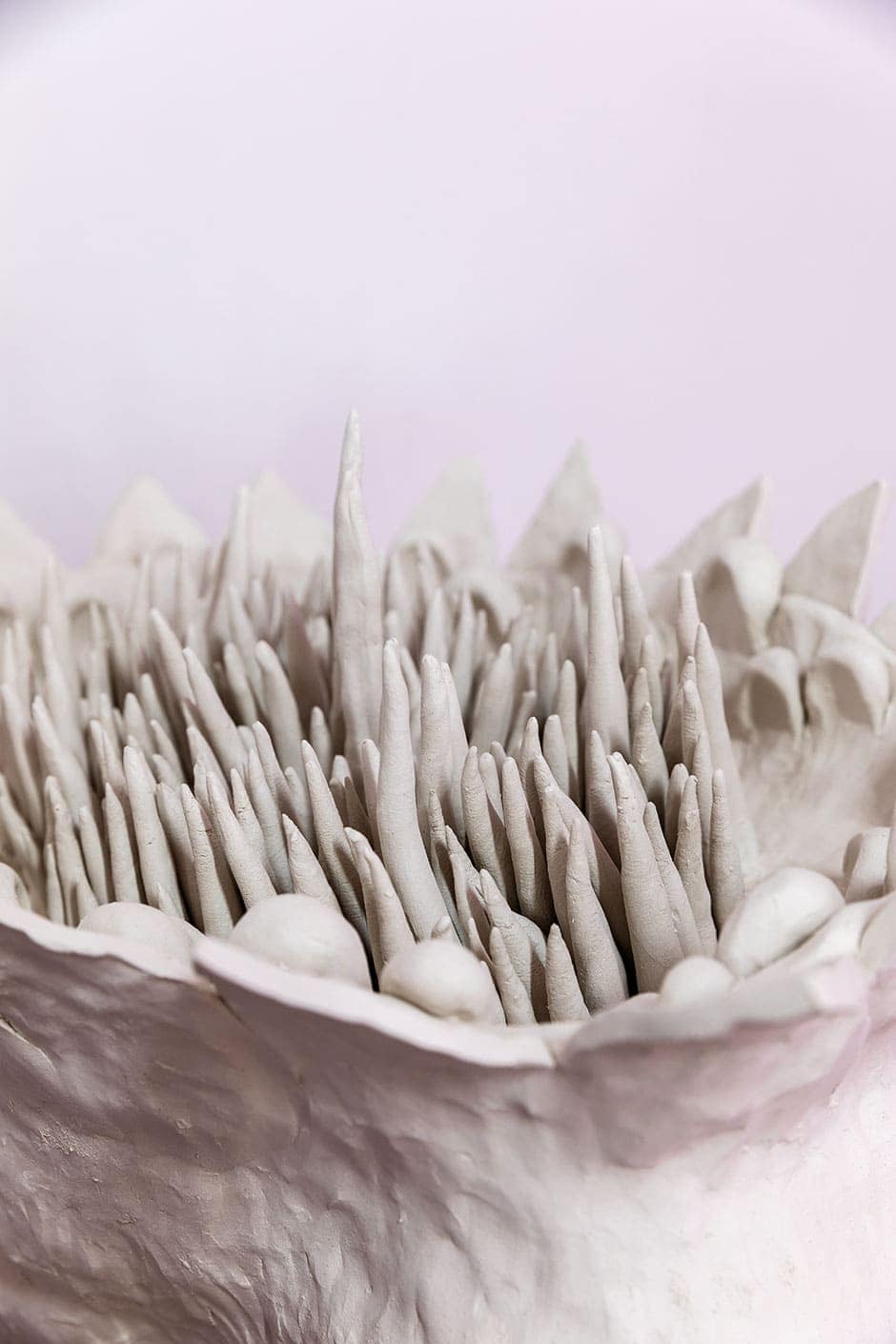
The objects you create have an otherworldly feel — what inspires them? My sculptures are influenced by forms found in the garden. I have a specific interest in flowers and floral textures; I look at the micro of thorns and petals, veins in leaves, stems, buds, stamens, pollen, floral colour combinations and all the uniqueness that plants possess. In a broader sense, I also look at flower gardens for scale; they can contain such a mix of plants, and in that way, I think they are a world of their own, so it makes sense that my work might also hold that quality.
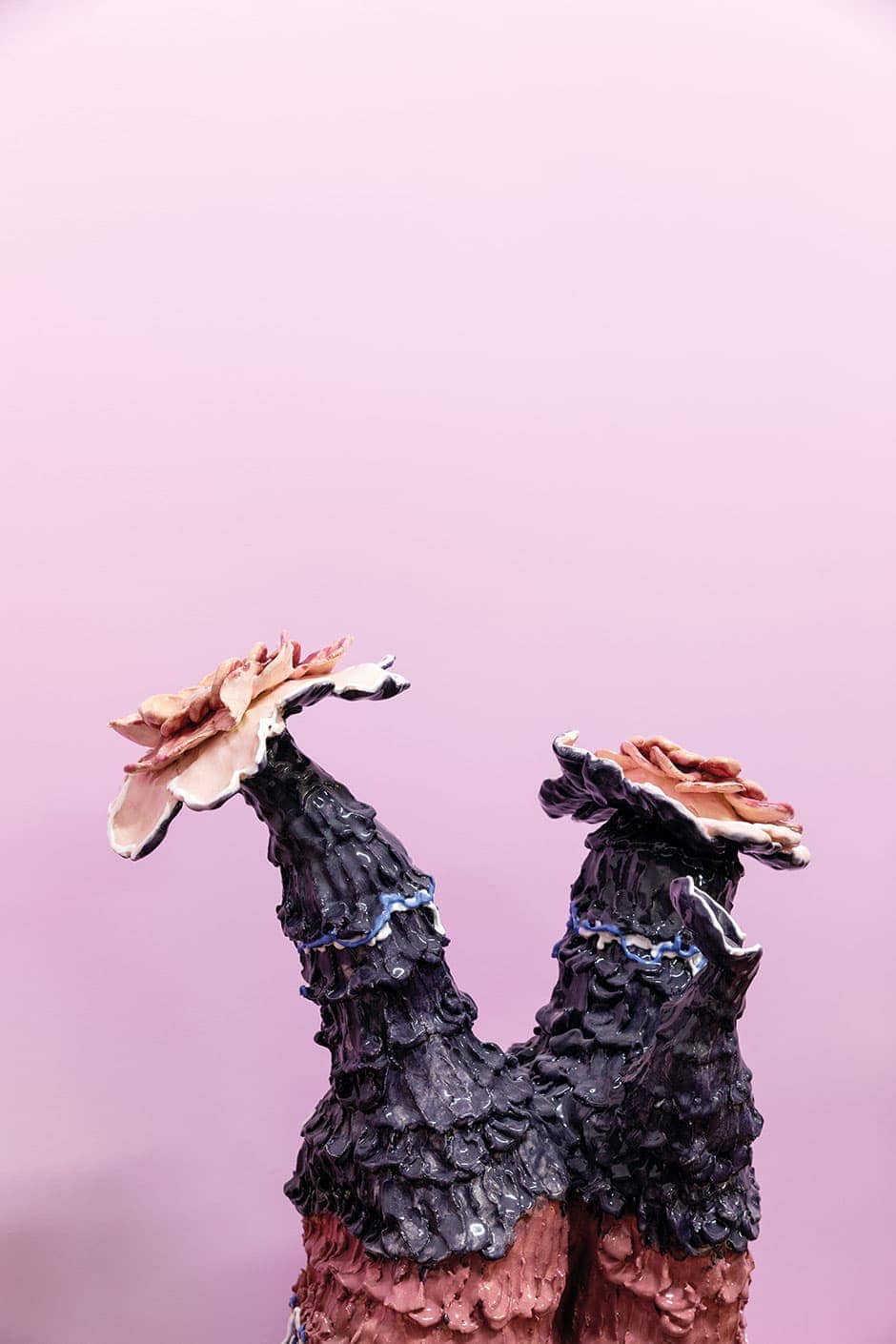
Colour is a strong feature of your work as well — what draws you to this palette? I’ve had a clear colour bias ever since I was a kid. It’s weird, actually — I’m not sure where it comes from but I have a distinct feeling when colours and colour combinations feel right to me. I find myself drawn to pink and purple hues, blues and certain undertones. I’ve become known for the colour lilac, which is why I titled my Master’s exhibition Planting Lilac. I’ve embraced that association — I think it’s really sweet.
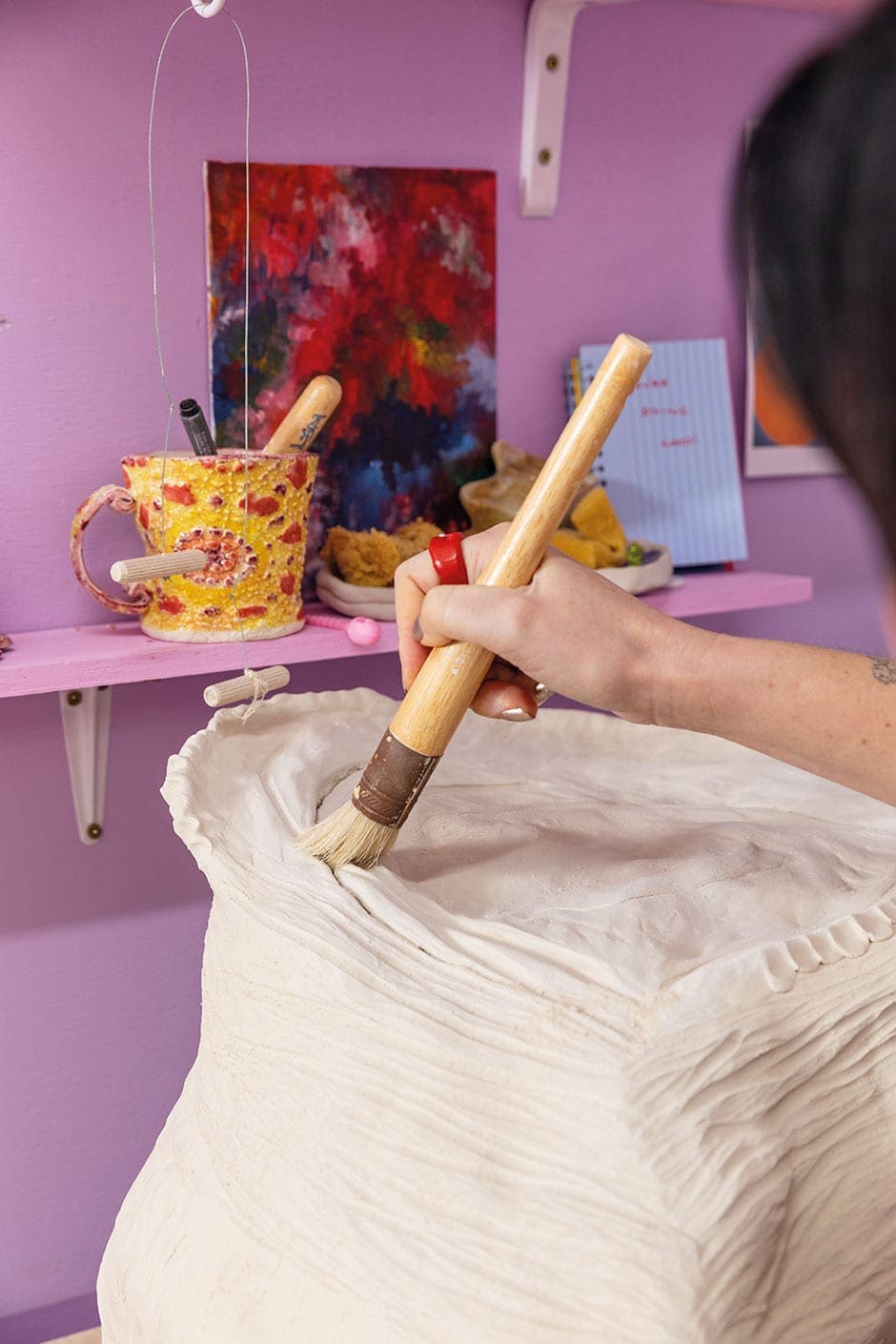
Can you tell us a bit about your process? I hand-build all my ceramic works, using a rough and adapted coiling technique. Essentially, I layer up rough coils of clay on top of each other by squeezing out each coil between my fingers to create the protruding textures on the surface of my forms. I’m pretty brutal with my clay and I think that translates to the texture of my work. I have to build large works over a series of days in the studio, so that each layer of clay has the chance to harden and dry a little bit before I can add more. It requires a bit of patience, which I’m constantly trying to push.
Which part of the making process do you find the most satisfying, and what’s the most frustrating? The most satisfying thing is when a work comes together in both form and colour. When I can get both of those aspects to combine in a way I feel happy with, it’s magic. The most frustrating thing is having to work within the limitations of the size of the kiln I have access to. If I could have a kiln the size of a house, I think I’d try to build a sculpture that size!
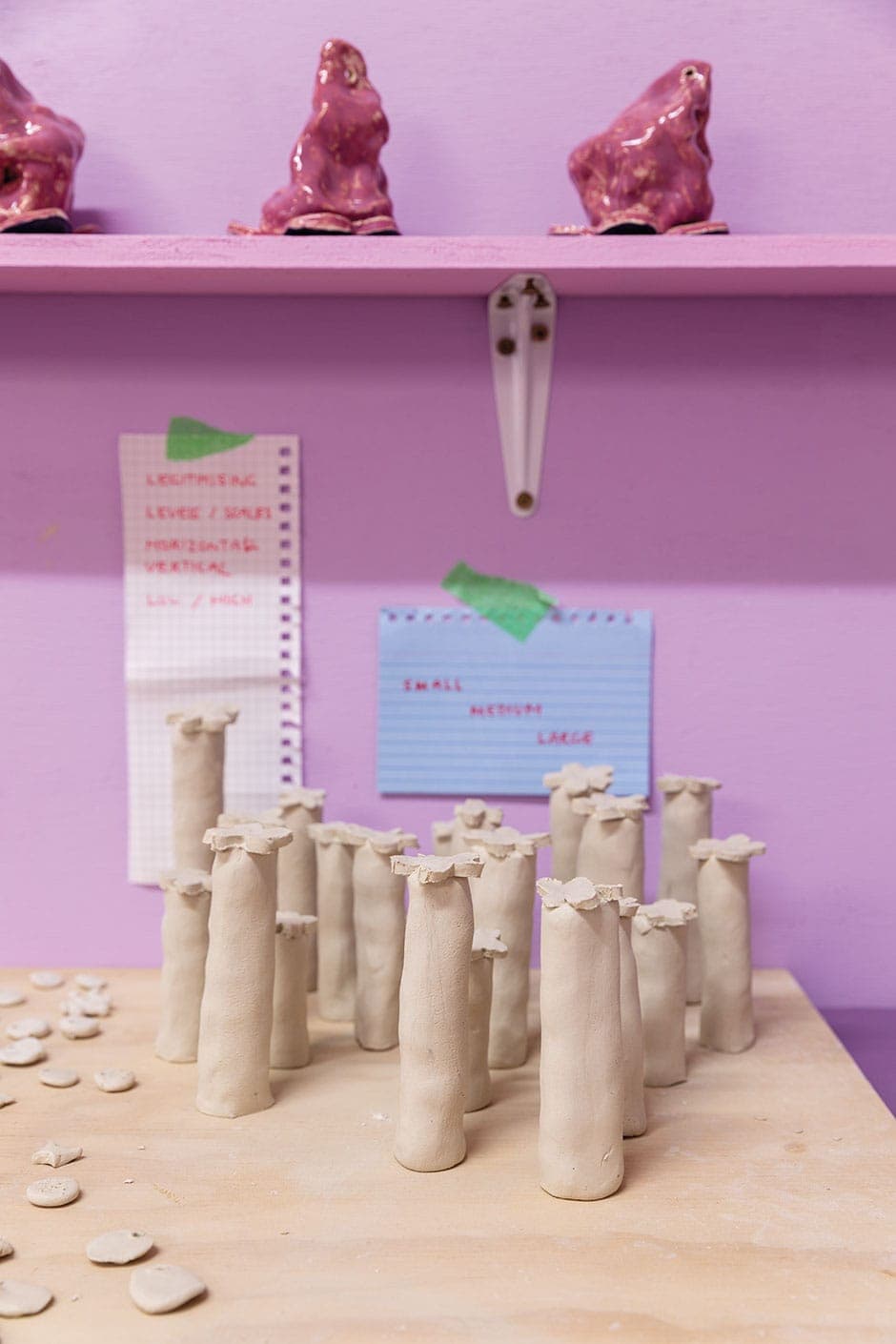
What are you working on at the moment — any plans for a show? I’m working on a large body of work for a show next year. I’m giving myself a bit of space and time because I’d love it to be filled with work in a range of different sizes — big, small, huge, teeny-tiny — which requires some time to build. Ceramic processes are time-consuming and I don’t want to rush it.
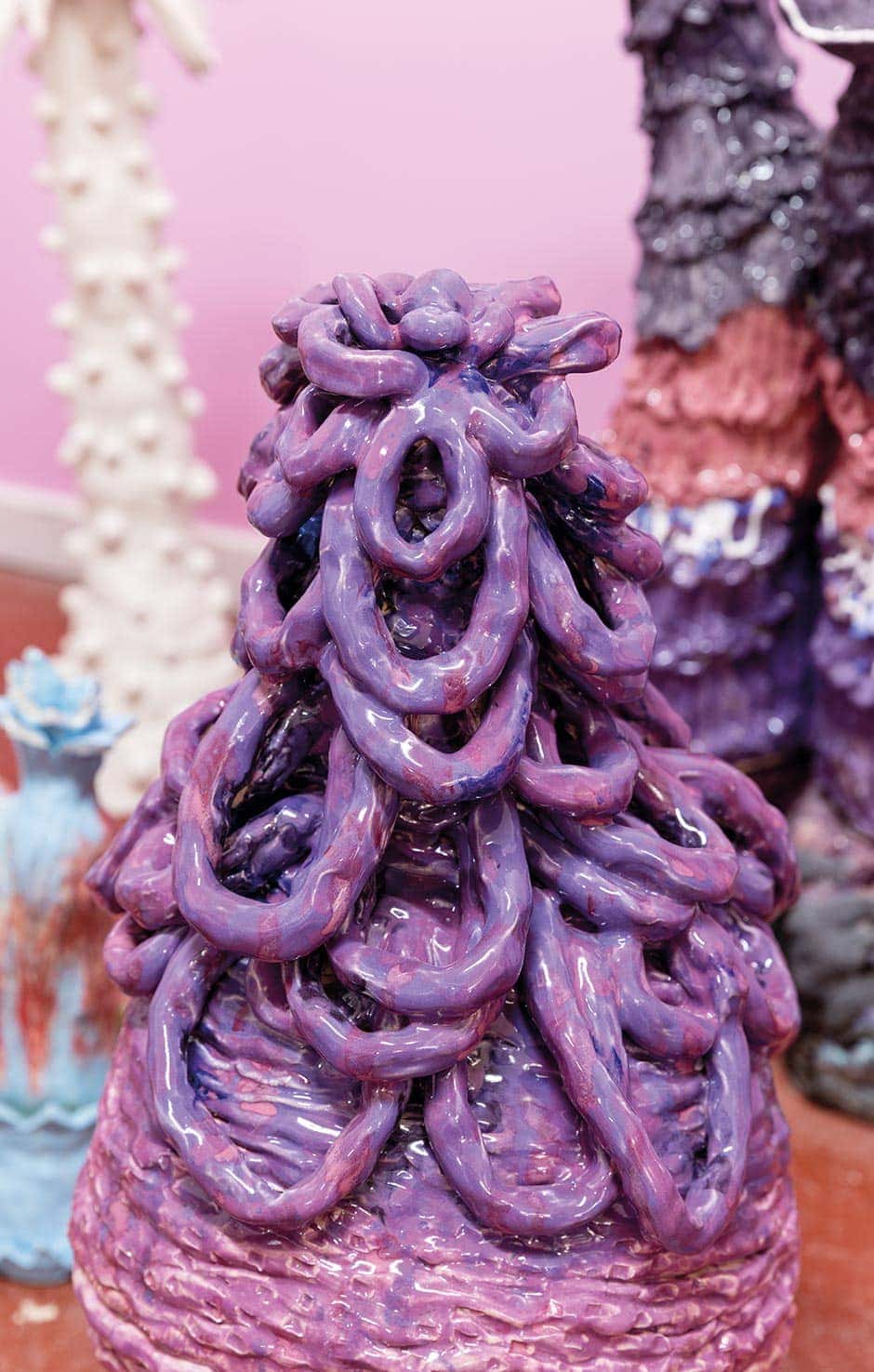
Funnily enough, given your original career plan, alongside your creative practice, you also teach. Tell us about Mud Studios… Two years ago, in the middle of a lab at AUT, I got a call from an unknown number. Becky Richards and I had been chatting over Instagram and she’d called me at the beginning of her endeavour to establish a collective of contemporary ceramic artists to share a studio together. When I finished studying, I moved into my studio space alongside four other ceramic artists. Over the past couple of years, our space has slowly grown from five ceramic artists to 10 interdisciplinary artists, and we’ve started a ceramics school teaching small, relaxed hand-building classes for anyone who wants to come along. I’m so proud of what we’ve worked so hard to build.

What’s the most rewarding part of teaching? Providing people with a safe and unintimidating space in which to create. Students often comment that my classes are an important part of their week or that they feel relaxed afterwards. I make all my students cups of tea and bring snacks and chocolate because I genuinely care and want them to have a great experience.

When you’re not making in the studio, how do you like to spend your downtime? You’ll find me visiting galleries to look at other artists’ work, op-shopping, seeing live music and eating Doe doughnuts. After the lockdowns, it’s just nice to get out. A screen is no replacement for experiencing things in person.
debbiejoanneharris.com
Interview Alice Lines
Photography Larnie Nicolson

